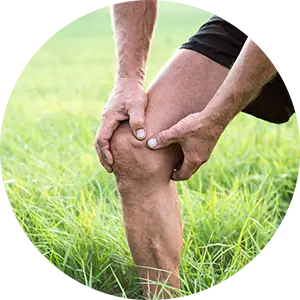Knee pain affects one-third of people in the U.S. every year. It’s the second most common cause of chronic pain! This weight-bearing joint is crucial to helping us move about our daily lives. Most people don’t give much thought to the knee, how it works, and what it’s responsible for until there’s a problem. An injury to the knee will quickly force you to take notice.
The knee is one of the body’s largest, most complex joints. It comprises four bones: the femur, the tibia, the fibula, and the patella. The muscles that support the knee are the quadriceps in the front and the hamstrings in the back. These structures are connected through an intricate network of ligaments and cartilage. The anterior cruciate ligament (ACL) prevents the femur from moving back onto the tibia, and the posterior cruciate ligament (PCL) prevents the femur from sliding forwards. Two collateral ligaments, medial and lateral, help provide support. The meniscus (lateral and medial) is the tissue that sits between the femur and the tibia, providing ease of movement between the two bones. There is also articular cartilage that sits behind the patella. Finally, the knee is surrounded by bursae, fluid-filled sacs that help to cushion the knee joint.



